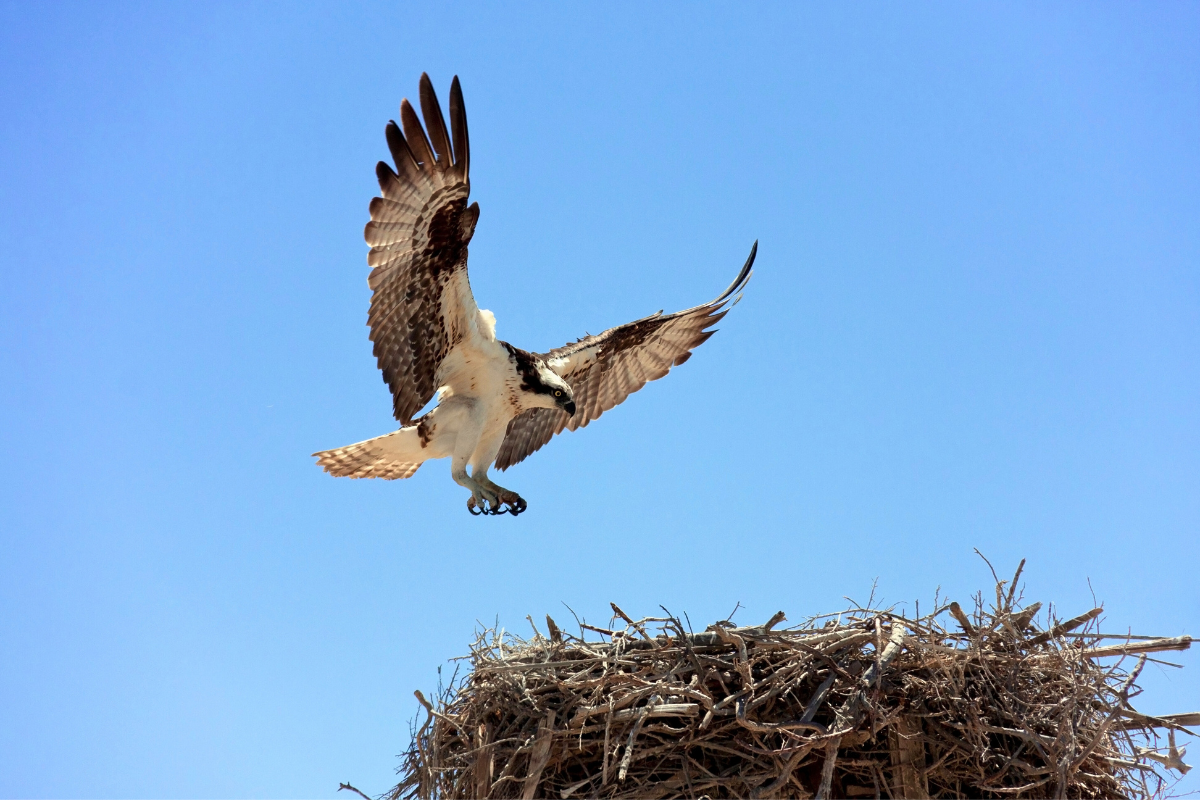By Jack Keller
There is excitement in the air this week over the announcement of plans to turn an abandoned power plant site on Manresa Island in Norwalk, Connecticut, into a public park. The 125-acre island is right in Friends of Animals’ headquarters backyard.
While the island was abandoned by humans in 2013 after the plant suffered catastrophic damage from Hurricane Sandy, the truth is it is teeming with ospreys, minks, deer and other wildlife. So, it begs the question: Is it really possible to accomplish conservation—like restoring and connecting habitat for wildlife—and public access?
As this project progresses conservation must take priority over human-centered interests like a public beach, recreational spaces, docks, etc. It is paramount that Manresa Island’s wildlife secure their futures on the island, too. Large areas of undisturbed land are key to a healthy ecosystem
We applaud Norwalk native Austin McChord, an engineer and venture capitalist, and his wife Allison for recently purchasing the sprawling former NRG plant and surrounding acreage from a New York developer, saving it from being turned into a luxury housing development, more of what Fairfield Country doesn’t need.
After years of uncertainty, it only makes sense that Norwalk residents and officials were delighted to hear about this news. A freshly manicured beach, a new swimming pool, a futuristic event space—these are all things that Norwalkers will undoubtedly jump at the opportunity to take advantage of. With big architectural names such as SCAPE and the Bjarke Ingels Group (BIG)—two groups with a reputation for integrating landscape and architecture, the project promises to be one that “combines landscape and shoreline restoration with beaches and boating.”
But restoration at its core intends to return ecosystems to their natural, undiminished states. How is it possible to restore the landscape and shoreline on Manresa Island while also including docks, boats, swimming pools, and event spaces?
There are currently 19 active osprey nests on the island, including a few on the 250,000-square-foot power plant itself. In the years following human abandonment, these birds have been thriving.
Hugh McManus, a volunteer for the CT Audubon Society who serves as a steward to the Manresa Island ospreys, told The Hour newspaper that the island is home for these birds. He explained that the same birds come back every year—ospreys migrate south for winter; however the males and females separate. If they’ve survived the winter, the birds return to their nests at Manresa in the spring and wait for their mates.
These ospreys, along with their deer, raccoons, and mink cohabitants, will undeniably be disturbed once the power plant is under reconstruction. The CT Audubon Society says, “during nesting season, people or their pets should maintain a distance of at least 500 feet from an osprey nest.”
It’s difficult to see how this distance will be responsibly maintained when Manresa Island becomes a public park, especially as the McChords say they’re “above all else excited to bring their dog.”
While we love dogs, dogs can cause habitat and wildlife disturbance if not kept on leashes.
The bottom line is, when it comes to wild, open spaces, public access shouldn’t mean all access.
It’s also worth noting that Norwalk’s wild places are continually dwindling. The Norwalk Land Trust stewards just 33 parcels of woodlands and open space, just over 110 acres. For context, that figure represents just 0.75 percent of Norwalk’s land—that means that less than one percent of Norwalk’s land is free from development.
While Manresa Island doesn’t count towards this figure, it reminds us how careful we need to be when considering the tiny pieces of land where wildlife is still free to live without human intrusion.
Friends of Animals hopes that the protection of Manresa’s nonhuman residents will not be ignored by a public amenity that Norwalk Mayor Harry Rilling describes as an “economic force.”
Jack Keller is communications assistant for Friends of Animals. He is a Norwalk native and grew up enjoying the Connecticut coastline and woodlands. Jack has always been passionate about conservation.

